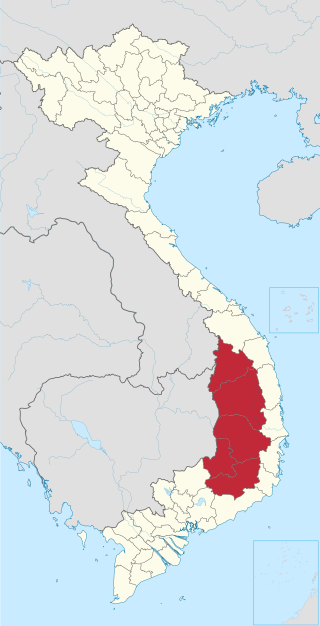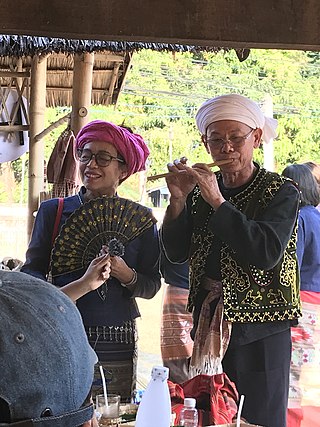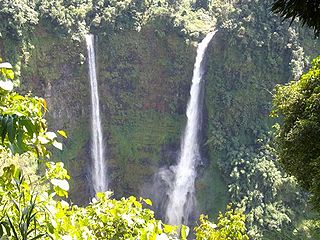 Pacoh children in Laos | |
| Total population | |
|---|---|
| 22,640 (Laos 2015) [1] | |
| Regions with significant populations | |
| Laos, Vietnam | |
| Languages | |
| Pacoh, others | |
| Religion | |
| Animism |
The Pacoh are a minority ethnic group, part of the Katuic peoples.
 Pacoh children in Laos | |
| Total population | |
|---|---|
| 22,640 (Laos 2015) [1] | |
| Regions with significant populations | |
| Laos, Vietnam | |
| Languages | |
| Pacoh, others | |
| Religion | |
| Animism |
The Pacoh are a minority ethnic group, part of the Katuic peoples.
The name Pacoh may mean 'mountaineers'. Alternate names for Pacoh are: Bo, Pako, and Van Kieu.
They live mostly in an extremely remote mountainous area of Laos, near the Vietnam border. There are approximately 17,000 Pacoh in Laos, and approximately 35,000 Pacoh worldwide.[ citation needed ]
In Laos, the Pacoh live in the northern portion of Saravan Province (Sa Mouay District) and the southern portion of Savannakhet Province (Nong District).
Other Pacoh live in Vietnam where they are considered a part of the Ta Oi minority. In Vietnam, the Pacoh (Khas Pakho) number approximately 15,000 (1973) and are found in the highlands of Thừa Thiên-Huế Province. [2]
Their main industry is slash-and-burn agriculture.
Most Pacoh are animists. They pray to many gods, ghosts and deities. Every village has a spirit-house on its outskirts.
Pacoh speak the Pacoh language.

Laos is a country in and the only landlocked nation in mainland Southeast Asia, northeast of Thailand and west of Vietnam. It covers approximately 236,800 square kilometers in the center of the Southeast Asian peninsula and it is surrounded by Myanmar (Burma), Cambodia, the People's Republic of China, Thailand, and Vietnam.

The Hmong people are an indigenous group in East and Southeast Asia. In China, the Hmong people are classified as a sub-group of the Miao people. The modern Hmong reside mainly in Southwest China and countries in Southeast Asia such as Vietnam, Laos, Thailand, and Myanmar. There is also a large diasporic community in the United States of more than 300,000. The Hmong diaspora has smaller communities in Australia and South America.

Kaysone Phomvihane was the first leader of the Communist Lao People's Revolutionary Party from 1955 until his death in 1992. After the Communists seized power in the wake of the Laotian Civil War, he was the de facto leader of Laos from 1975 until his death. He served as the first Prime Minister of the Lao People's Democratic Republic from 1975 to 1991 and then as the second President from 1991 to 1992.

The Central Highlands, South Central Highlands, Western Highlands or Midland Highlands is a region located in the south central part of Vietnam. It contains the provinces of Đắk Lắk, Đắk Nông, Gia Lai, Kon Tum, and Lâm Đồng.

Quảng Bình is a southern coastal province in the North Central Coast region, the Central of Vietnam. It borders Hà Tĩnh to the north, Quảng Trị to the south, Khammouane of Laos to the west and the East Sea to the east.

The Annamite Range or the Annamese Mountains is a major mountain range of eastern Indochina, extending approximately 1,100 km (680 mi) through Laos, Vietnam, and a small area in northeast Cambodia. The mountain range is also referred to variously as Annamese Range, Annamese Mountains, Annamese Cordillera, Annamite Mountains and Annamite Cordillera. The name "Annam" is the Vietnamese pronunciation and terminology of Chinese: 安南, meaning "the tranquil south" referring to Vietnam. The French adopted the word and used "Annamese" or "Annamite" to refer to the Vietnamese.

The largest of the ethnic groups in Cambodia are the Khmer, who comprise 95.8% of the total population and primarily inhabit the lowland Mekong subregion and the central plains. The Khmer historically have lived near the lower Mekong River in a contiguous arc that runs from the southern Khorat Plateau where modern-day Thailand, Laos and Cambodia meet in the northeast, stretching southwest through the lands surrounding Tonle Sap lake to the Cardamom Mountains, then continues back southeast to the mouth of the Mekong River in southeastern Vietnam.

The Bru are an indigenous ethnic group living in Thailand, Laos, and Vietnam. They speak a Katuic language, kaubru unlike the Brao, who speak a Western Bahnaric language. The Bru are not found in northeastern Cambodia. The Lun, Kreung, Kavet, Amba and Brao Tanap groups in northeastern Cambodia are actually sub-groups of the Brao, not the Bru. The Brao sub-groups in Laos are the Lun, Kavet, Jree, Ka-ying, and the Hamong.

The Brau people are an ethnic group living in Laos, Cambodia, and Vietnam. In Vietnam, most Brau live in Đắc Mế village, Bờ Y commune, Ngọc Hồi district, Kon Tum province, and the population was 525 in 2019. Their ancestors came from southern Laos and northeastern Cambodia, migrating to Vietnam around 150 years ago. They speak Brao, a Mon–Khmer language.

The Tai Lü people are an ethnic group of China, Laos, Thailand, Burma and Vietnam. They speak a Southwestern Tai language.

The Bolaven Plateau is an elevated region in southern Laos. Most of the plateau is located within Champasak Province of Laos, though the edges of the plateau are also located in Salavan, Sekong and Attapeu Provinces. It is located between the Annamite Range, along which runs Laos' eastern border with Vietnam, and the Mekong River to the west, at about 15°N106°E. The plateau's elevation ranges approximately from 1,000 to 1,350 metres above sea level. The plateau is crossed by several rivers and has many scenic waterfalls. The name Bolaven makes reference to the Laven ethnic group which has historically dominated the region. However, domestic migrations by the Lao ethnic group has resulted in widespread interethnic marriage, thus modifying the ethnic composition of the region.

Nguồn is a Vietic language spoken by the Nguồn people in the Trường Sơn mountains in Vietnam's North Central Coast region as well as in nearby regions of Laos.
The Rau people, also known as Lao, were an ethnic group of ancient China. Their descendants are the Zhuang, Buyei, Tay–Nùng and other Kra–Dai-speaking peoples.

The Mường Thanh Valley is a valley located in the Điện Biên Province of Northwestern Vietnam. The valley is approximately 20 km long by 5 km wide. A heart-shaped basin, the valley is surrounded by a region filled with jungles, rice paddies, and lakes. Located within the Mường Thanh Valley is the city of Điện Biên Phủ. The capital of Điện Biên Province, Điện Biên Phủ, is famous as the site of a decisive battle in 1954 in which French forces were defeated by Việt Minh troops under general Võ Nguyên Giáp.
The Phunoi are a tribal people of Laos, Northern Thailand, and Vietnam. They are related to the Mpi people and the Bisu people.
Brao is a Mon–Khmer language of Cambodia and Laos.

Salavan is a province of Laos, located in the south of the country. Its earlier name was Saravan which was changed by the Thais to Salavan in 1828. It was part of the Champasak Kingdom in an area known as Muang Mang inhabited by minorities of Mon-Khmer groups.

Phongsaly province, also spelled Phôngsali, is a province of Laos in the extreme north of the country. The capital of the province is the city of Phôngsali. Phongsaly is between Yunnan (China), and Điện Biên province in Vietnam. Its culture has thus been historically heavily influenced by China.
The Yang people, also known as the Nhang or Nyang, are a Tai-speaking ethnic group of Phongsaly Province, northwestern Laos. Chazee (1998) reports that they number 5,843 people as of 2015. The Yang are heavily influenced by Tai Lue culture, although the Yang of Namo Nua village, Oudomxay province are more heavily influenced by Tai Dam people culture.
The Laotian diaspora consists of roughly 800,000 people, both descendants of early emigrants from Laos, as well as more recent refugees who escaped the country following its communist takeover as a result of the Laotian Civil War. The overwhelming majority of overseas Laotians live in just three countries: Thailand, the United States, and France.